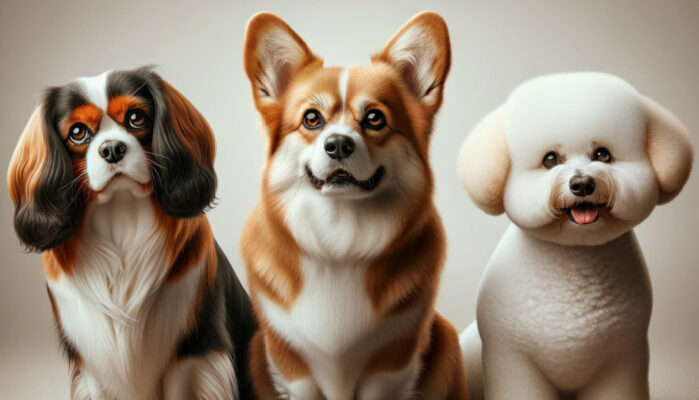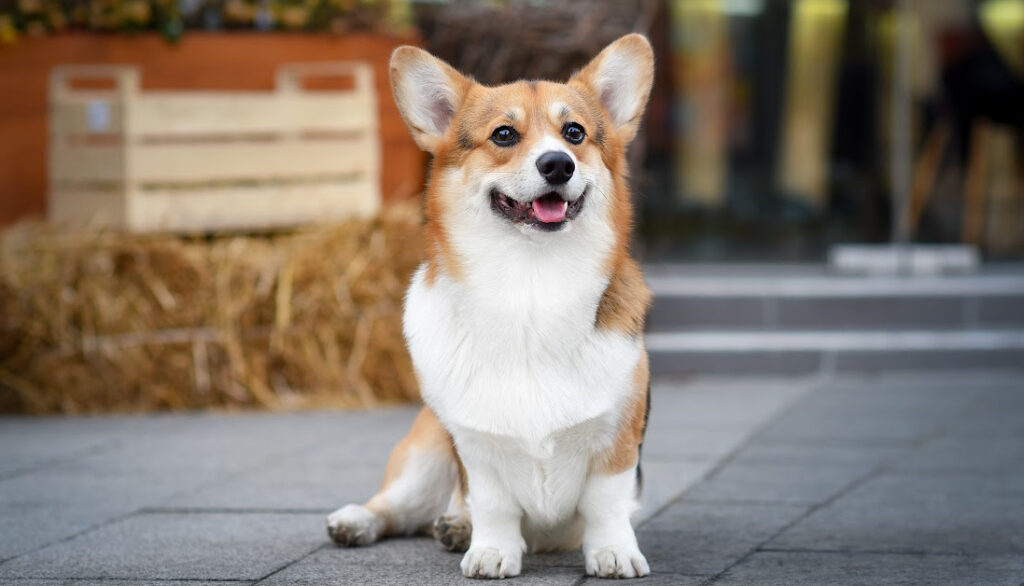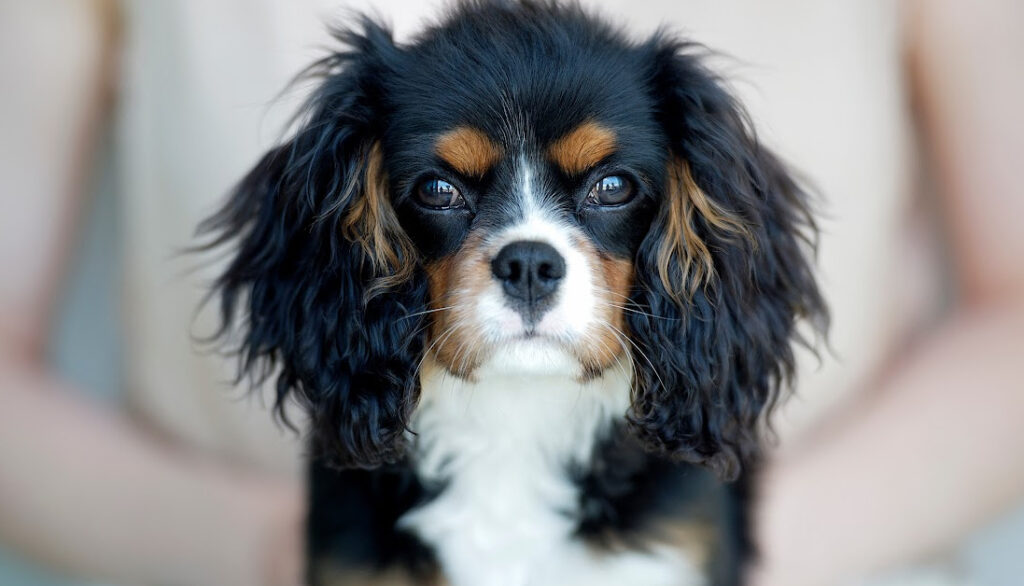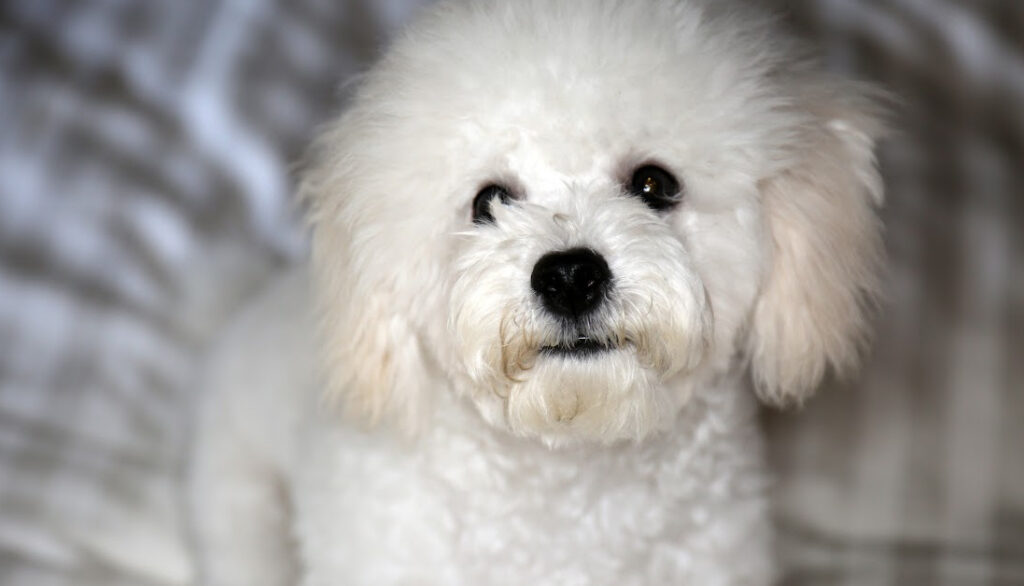Welcome to the majestic world of royal dog breeds. These are not just your average pups; they have a regal lineage and are beloved by kings, queens, and other nobility throughout history. The pedigree, the aura, the grandeur; it’s all part of the package. Intrigued? Well, you should be, because we’re about to embark on a fascinating journey exploring the allure of royal dog breeds.

From the corridors of ancient palaces to the modern monarchies, dogs have always held a special place. They’re not just pets, but symbols of status and power. The breeds favored by royalty are often not just chosen for their aesthetic appeal, but also for their temperament, intelligence, and loyalty. These high-born canines have a story to tell, and it’s often reflected in their sophisticated behaviors, regal carriage, and dignified manners.
Throughout history, some breeds have donned the royal mantle more frequently than others. The Cavalier King Charles Spaniel, for instance, was a noble companion to many a king and queen in Europe. The majestic Great Pyrenees served as guardians for centuries, their majestic presence a testament to their royal lineage.
However, owning a royal dog breed does not simply mean bringing a piece of history into your home. It also signifies a commitment to meeting unique care needs, from grooming regimens fit for a queen to training techniques that instill manners befitting a royal court. And with this commitment comes the task of preserving the legacy of these royal breeds, ensuring they continue to grace our lives with their royal charm.

The Historical Connection Between Royalty and Dog Breeds
Ever wondered why those “royal dog breeds” carry such illustrious titles? Let’s unravel the fascinating tales of grandeur and delve into the captivating chronicles of the dogs that have walked the royal corridors.
Dogs as Symbols of Status and Power
Long before the advent of modern monarchies, dogs were considered a symbol of status and power. A defining characteristic of ancient societies was the domestication and breeding of dogs. The nobles, the aristocracy, the kings, and queens all embraced the charm and companionship of these loyal friends.
The Egyptians, for instance, valued dogs so much that they often depicted their gods with canine heads. In ancient China, Pekingese dogs were bred exclusively for the royal family, symbolizing their high status. These dogs were, quite literally, living, breathing status symbols, a testament to the power and prestige of their royal owners.
In Europe, the trend continued with nobles and royals often depicted in portraits alongside their favorite breeds. Owning a specific breed of dog could even signify your standing within the nobility!
Royal Canine Favorites Through the Ages
Let’s take a historical walk down the royal lanes and meet the favorite “royal dog breeds” through the centuries.
- – King Charles Spaniel: Named after King Charles II of England, this breed has a rich royal lineage. The king’s affection for his Spaniels was so profound that he enacted a law allowing the breed to enter any public place, including the Houses of Parliament.
- – Greyhound: Queen Elizabeth I had a profound love for these slender, swift canines. They were considered noble hunting dogs and went on to become a symbol of the Tudor dynasty.
- – Pembroke Welsh Corgi: How can we forget the favorite breed of Queen Elizabeth II? She received her first corgi, ‘Dookie,’ as a child and has owned over 30 corgis since then. These dogs have been constant companions to the Queen throughout her reign.
- – Bichon Frise: This breed enjoyed the limelight during the French Renaissance under Francis I but was later dethroned during the French Revolution. However, the Bichon Frise made a dramatic comeback in the 19th century under Napoleon III.
These royal favorites not only enjoyed the luxuries of royal life but also influenced canine fashions and breeding priorities of their time.
The historical connection between royalty and dog breeds is indeed intriguing. Understanding this relationship not only enriches our knowledge of “royal dog breeds” but also gives us a unique perspective into the cultural and social significances of our four-legged friends. So, next time you see a ‘royal’ breed, remember, you’re looking at a breed of great historical significance, a breed that’s truly fit for a queen’s canine court!
The Most Regal Dog Breeds Throughout History
Through the annals of history, various dog breeds have been associated with the royalty, and have not just been pets, but loyal companions, status symbols, and even protectors. Let’s delve into the royal history of some of these noble breeds.
Breeds That Have Graced the Palaces of Europe
European monarchies have had a rich tradition of keeping dogs, with specific breeds being particularly favored.
The Bichon Frise, a small, charming breed, originated as a favorite among Spanish royalty before becoming the darling of the French royal courts. These fluffy dogs with their merry demeanor were adored by the likes of King Francis I and Napoleon III.
The Dalmatian, known for its distinctive black and white spots, was a status symbol among nobility and frequently found gracing royal courts across Europe. Their elegance and distinctive coat made them a preferred choice for royal companionship.
The Irish Wolfhound has a royal lineage that reaches back to ancient Irish kings. Renowned for their courage in battle and hunting prowess, they were prized by the European nobility and often given as noble gifts.
Canines That Have Captured the Hearts of Monarchs
Beyond Europe, various monarchs around the world have also had their own favored canine companions.
The Pekingese is a breed steeped in royal history. In ancient China, these dogs were kept by emperors and their families. Revered as semi-divine, they were even guarded by soldiers and had their own servants.
Japanese Akitas have long been associated with Japanese royalty and nobility. Known for their loyalty, they were once only allowed to be owned by the Imperial family. Hachiko, the famously loyal Akita, has a statue erected in his honor in Tokyo.
The Pharaoh Hound, as the name suggests, has connections to ancient Egyptian royalty. Depictions of similar dogs have been found in ancient Egyptian art, indicating their high status.
The Lhasa Apso was held in high regard in Tibet, often owned by monks and nobility, and believed to be the earthly form of Tibetan deities. The breed was gifted to the visiting dignitaries, spreading the breed’s fame worldwide.
From these canine companions, we can see that what defines a royal dog breed is not just pedigree or lineage, but also the unique bond they have shared with their royal owners throughout the ages. Whether for their distinctive appearance, their abilities, or their loyalty and companionship, these breeds have captured the hearts of monarchs and continue to be treasured today. Whether you’re a queen, king, or a commoner, these breeds offer a touch of regality to any home.
Listicle: A Royal Roster of Regal Breeds
Cavalier King Charles Spaniel: A Noble Companion
The Cavalier King Charles Spaniel, a breed known for its connection to King Charles II of England, embodies royal elegance with its silky coat and expressive eyes. These dogs have been celebrated for their loyalty and affectionate nature, making them perfect companions for the noble and wealthy.
With a noble lineage tracing back to the 17th century British court, these dogs were the darlings of royalty, often appearing in paintings alongside their royal masters. They were, and still are, symbols of refinement and nobility.
Their small size makes them perfect for royal households, as they can comfortably reside within the palaces and castles. But don’t be fooled by their delicate demeanor; these dogs are adventurous, agile, and incredibly social.
Below are some key characteristics of the Cavalier King Charles Spaniel:
- Breed Group: Toy Breed
- Height: 12 – 13 inches
- Weight: 13 – 18 pounds
- Temperament: Gentle, Playful, and Affectionate
Great Pyrenees: The Majestic Guardian
The Great Pyrenees, a regal dog breed that once guarded the châteaux of the French nobility, is known for its bravery and strength. This impressive breed has a rich history dating back to around 3000 B.C. In the French court, they were highly treasured for their protective abilities, guarding the estates and families of the nobility.
These majestic dogs exude an air of royal dignity with their beautiful white coats and striking presence. Despite their large size, Great Pyrenees are known for their calm and gentle demeanor, making them excellent companions.
Great Pyrenees are intelligent and independent, a trait necessary for their historical role as guardians of the flock. With good training and socialization, these dogs can adapt well to family life.
Below are some key characteristics of the Great Pyrenees:
- Breed Group: Working Breed
- Height: 25 – 32 inches
- Weight: 85 – 160 pounds
- Temperament: Calm, Patient, and Courageous
These are just two examples of the most popular royal dog breeds that have charmed the hearts of monarchs throughout history and continue to be treasured companions in many homes today.

Characteristics of Royal Dog Breeds
When it comes to royal dog breeds, certain traits make them stand out from the rest. These breeds are not just known for their regal appearance but also for their unique characteristics that have made them favorites among royalty for centuries.
Traits That Define a Royal Breed
Every royal dog breed has its own unique set of traits, but there are certain characteristics that are commonly found among them.
- Nobility: Royal dog breeds often carry themselves with an air of nobility. They are dignified, composed, and exude an aura of refinement that is hard to miss.
- Loyalty: Loyalty is a trait that is highly valued in royal dog breeds. These dogs are known to be extremely devoted to their human companions, making them excellent pets for those who value a strong bond with their canine friends.
- Intelligence: Many royal dog breeds are highly intelligent. This makes them quick learners and highly trainable, which is a must-have trait for dogs in a royal setting.
- Temperament: Royal dog breeds are often calm and well-behaved. They are not overly excitable or aggressive, making them ideal companions in a royal court.
The Role of Pedigree and Lineage in Royal Breeds
Pedigree and lineage play a significant role in defining a royal dog breed. These breeds often have a long history of being bred for specific purposes, such as hunting, guarding, or companionship, which has shaped their characteristics over generations.
For example, the Cavalier King Charles Spaniel, a breed beloved by King Charles II, was bred for companionship. This breed is known for its affectionate nature, loyalty, and ability to get along well with other pets and children. Similarly, the Great Pyrenees, a breed favored by Louis XIV, was bred for guarding livestock. This breed is known for its protective nature, strength, and bravery.
Furthermore, the pedigree of these breeds is often carefully maintained to preserve their unique traits. This means that when you bring a royal dog breed into your home, you are not just getting a pet, but a piece of history.
In conclusion, the characteristics of royal dog breeds are a product of their noble history and careful breeding. These traits, combined with their majestic appearance, make them truly worthy of their royal status.
Caring for a Royal Dog Breed
Having a royal dog breed in your home is not just about having a pet, it’s about caring for a part of history. These high-born canines not only require basic needs like food, water, exercise, and love but also a special level of care befitting their royal status.
Meeting the Needs of High-Born Canines
These beautiful creatures, with their royal lineage, deserve nothing but the best. Whether it’s a Cavalier King Charles Spaniel, often seen curled up on the lap of a queen, or a Great Pyrenees, the majestic guardian of the French court, they all have unique needs.
Here are some essentials to ensure your royal dog breed lives like a king or queen:
- – Nutrition: Royal dog breeds often require a specific diet. It’s essential to consult with a veterinarian or a breed expert to understand their nutritional needs. High-quality dog food, rich in essential nutrients and vitamins, will keep them healthy and their coats shiny.
- – Exercise: Regular exercise is crucial for royal dog breeds, many of which are full of energy and need to burn it off. Walks, runs, or playtime in the yard can be great ways to keep your canine companion fit and happy.
- – Medical Care: Regular vet check-ups and timely immunizations are important for all dogs, but especially so for royal breeds. Many of these breeds have specific health issues, so a vet familiar with your dog’s breed can be a great asset.
Grooming and Maintenance Fit for a King or Queen
The majestic appearance of royal dog breeds requires regular grooming. This is not just to keep them looking their best, but also to maintain their health.
Here are some grooming tips for your regal pet:
- – Hair Care: Most royal dog breeds have long, lush coats that require regular brushing to prevent tangling and matting. Some breeds may even require professional grooming services to maintain their coat’s luxurious appearance.
- – Nail Trimming: Regular nail trimming is essential to prevent overgrowth, which can lead to discomfort and potential health issues.
- – Ear Care: Many royal breeds, such as the Cavalier King Charles Spaniel, have long, floppy ears that can be prone to infection. Regular cleaning can prevent these issues.
The care and maintenance of royal dog breeds can be a bit more demanding than other breeds. However, the reward of having such a noble and loyal companion is well worth the effort. Remember, these dogs have graced the palaces of Europe and captured the hearts of monarchs. Their royal lineage deserves nothing but the best.

Training and Etiquette for Royal Dog Breeds
Instilling Manners Befitting a Royal Court
Just like the royalty themselves, royal dog breeds also need to demonstrate a superior level of elegance and sophistication in their behavior. Owners of these breeds will often find themselves playing the role of a pet parent and a royal etiquette teacher. These breeds, having been surrounded by nobility throughout history, have a natural predisposition to refined manners and a calm demeanor. However, it’s important to reinforce these traits through training to ensure that they thrive.
Start with the basics like sit, stay, and down. But, for these breeds, additional commands like ‘quiet‘, ‘leave it’, and ‘off’ are crucial. Their royal lineage could make them a bit stubborn at times, but remember, consistency is key.
Beyond basic obedience, understanding and respecting boundaries is a trait that all royal dogs should master. Whether it’s not jumping on the furniture or waiting patiently by the dinner table, these dogs should know their place in your household. After all, in royal courts, everyone has their place, including the beloved canines.
Training Techniques for Noble Dogs
The training techniques you employ should complement the nature of these breeds. They are not just any dogs; they are royal dog breeds. Consequently, they need training that suits their unique characteristics.
- Positive reinforcement: As with all dogs, positive reinforcement works wonders. However, it’s particularly effective with royal breeds as they thrive on love and affection. Reward their good behavior with treats, praises, or a favorite toy.
- Early socialization: Given their historical role in royal courts, these breeds are accustomed to being around a variety of people and pets. Early socialization will help them adapt to different situations and ensure they grow up to be well-rounded dogs.
- Patience and consistency: Royal dog breeds can sometimes be a bit stubborn due to their royal lineage. However, with patience and consistency, you can instill in them the manners befitting a royal court.
- Professional training: If you’re struggling to train your royal breed, consider seeking the help of a professional dog trainer. They have experience dealing with such breeds and can provide useful insights.
Remember, while the goal is to train your royal breed to behave in a specific manner, it’s also important to respect their individual personalities. Each dog, royal or not, is unique and will respond differently to training. So, be patient, respect their pace, and most importantly, enjoy the process!
The Future of Royal Dog Breeds in Contemporary Society
The legacy of royal dog breeds is one that has been meticulously preserved throughout history. These majestic breeds have not only been cherished for their regal appearance and distinguished lineage, but they have also been integral to the opulence of royal courts and have played significant roles in the lives of monarchs. But what does the future hold for these high-born canines in our modern society?
Preserving the Legacy of Royal Breeds
In today’s world, the preservation of royal dog breeds is a matter of heart, passion, and commitment. Breeders and canine enthusiasts around the globe are committed to upholding the distinguished lineage and unique traits of these breeds. From the noble Cavalier King Charles Spaniel to the majestic Great Pyrenees, the preservation of these breeds requires diligent breeding practices to ensure that their lineage remains unbroken.
- Cavalier King Charles Spaniel: This breed, once the favorite of King Charles II of England, is as gentle and affectionate as it is regal. Breeders are careful to preserve not just its charming appearance, but also its friendly and outgoing nature.
- Great Pyrenees: This breed, known for its strength and majesty, has been a guardian of livestock in the Pyrenees mountains for centuries. Its protective nature and impressive size are qualities breeders strive to maintain.
Through the dedication of these breeders, the legacy of royal dog breeds continues to thrive, providing future generations with a piece of living history that they can appreciate and adore.
The Role of Royal Breeds in Modern-Day Royalty
While the days of monarchs parading their canine companions as status symbols may be long gone, the significance of royal dog breeds in modern-day royalty is still present. Royal families across the globe continue to show their affection for these breeds, often making headlines with their choice of pet.
For instance, the British royal family has a well-known love for Corgis, with the late Queen Mother and Queen Elizabeth II owning several during their reigns. These dogs have become so synonymous with the British monarchy that they are almost as recognizable as the Windsor’s themselves.
Similarly, other royal families, such as the Monaco royal family, have shown their preference for certain breeds. Princess Charlene of Monaco is well-known for her love of the South African Boerboel, a large and powerful breed with a protective nature.
In conclusion, the future of royal dog breeds in contemporary society seems secure, with their legacy being meticulously preserved and their continued presence in modern-day monarchies. These breeds, with their history steeped in grandeur, continue to charm people across the globe. They remind us of a time when royalty and regality were not just about crowns and palaces but extended to the loyal companions at their sides. Truly, these breeds are a testament to the fact that every dog is not just a man’s best friend, but indeed, fit for a queen’s canine court.
Frequently Asked Questions
Q1: What are some examples of royal dog breeds?
A: Some examples of royal dog breeds include the Corgi, Cavalier King Charles Spaniel, Bichon Frise, and the Pekingese.
Q2: Why are Corgis often associated with royalty?
A: Corgis are often associated with royalty because Queen Elizabeth II of England has owned more than 30 Corgis during her reign.
Q3: Are royal dog breeds suitable for families with children?
A: Yes, most royal dog breeds are known for their friendly and gentle nature, making them suitable for families with children. However, it’s always important to consider the specific temperament and needs of a breed before bringing a dog into your home.
Q4: What kind of care do royal dog breeds require?
A: The care required for royal dog breeds can vary. Some breeds may require regular grooming due to their long coats, while others may need plenty of exercise to stay healthy and happy. It’s important to research the specific needs of a breed before deciding to adopt.
Q5: Are royal dog breeds good for first-time dog owners?
A: Many royal dog breeds are known for their friendly and trainable nature, making them a good choice for first-time dog owners. However, potential owners should always consider the specific needs and temperament of a breed before making a decision.
Dr. Candy, a holistic veterinarian and certified raw dog food nutrition specialist, graduated from Oklahoma State University in 2009 with a DVM and has since specialized in companion animal nutrition, advocating for species-specific diets. With a background in wildlife rehabilitation and oil spill response, she combines holistic health and conventional medicine in her unique approach to treating chronic diseases, allergies, and autoimmune conditions in pets. As the owner of a veterinary practice in Colorado and an author, Dr. Candy is dedicated to educating pet parents and improving the health and happiness of animals.




